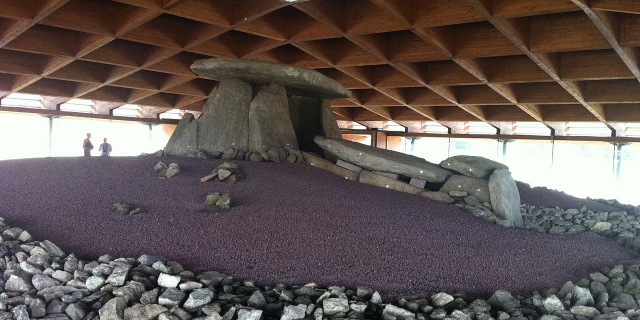Catedral de Santiago de Compostela
( Santiago de Compostela Cathedral )The Santiago de Compostela Arch cathedral Basilica (Spanish and Galician: Catedral Basilica de Santiago de Compostela) is part of the Metropolitan Archdiocese of Santiago de Compostela and is an integral component of the Santiago de Compostela World Heritage Site in Galicia, Spain. The cathedral is the reputed burial place of Saint James the Great, one of the apostles of Jesus Christ. It is also among the remaining churches in the world built over the tomb of an apostle, the other ones being St Peter's Basilica in Vatican City, St Thomas Cathedral Basilica in Chennai, India and Basilica of St. John in Izmir, Turkey.
The archcathedral basilica has historically been a place of pilgrimage on the Way of St James since the Early Middle Ages and marks the traditional end of the pilgrimage route. The building is a Romanesque structure, with later Gothic and Baroque additions.
According to the legend, the apostle Saint James the Great brought Christianity to the Iberian Peninsula.[1][2] However, in Acts 12 it is written that James was killed on order of Herod in Jerusalem.
According to legend, the tomb in Santiago was rediscovered in AD 814 by Pelagius the Hermit, after he witnessed strange lights in the night sky above the Libredon forest. Bishop Theodomirus of Iria recognized this as a miracle and informed king Alfonso II of Asturias and Galicia (791–842). The king ordered the construction of a chapel on the site. Legend has it that the king was the first pilgrim to this shrine. This was followed by the first church in AD 829 and then in AD 899 by a pre-Romanesque church, ordered by king Alfonso III of León,[3] which caused the gradual development of this major place of pilgrimage.[4]
In 997 the early church was reduced to ashes by Al-Mansur Ibn Abi Aamir (938–1002), army commander of the caliph of Córdoba. St James' tomb and relics were left undisturbed. The gates and the bells, carried by local Christian captives to Córdoba, were added to the Aljama Mosque.[5] When Córdoba was taken by king Ferdinand III of Castile in 1236, these same gates and bells were then transported by Muslim captives to Toledo, to be inserted in the Cathedral of Saint Mary of Toledo.
Construction of the present cathedral began in 1075 under the reign of Alfonso VI of Castile (1040–1109) and the patronage of bishop Diego Peláez. It was built according to the same plan as the monastic brick church of Saint Sernin in Toulouse, probably the greatest Romanesque edifice in France.[according to whom?] It was built mostly in granite. Construction was halted several times and, according to the Liber Sancti Iacobi, the last stone was laid in 1122. But by then, the construction of the cathedral was certainly not finished. The cathedral was consecrated in 1211 in the presence of king Alfonso IX of Leon.[6][7]
According to the Codex Calixtinus the architects were "Bernard the elder, a wonderful master", his assistants Robertus Galperinus and, later possibly, "Esteban, master of the cathedral works". In the last stage "Bernard, the younger" was finishing the building, while Galperinus was in charge of the coordination. He also constructed a monumental fountain in front of the north portal in 1122.
The city became an episcopal see in 1075 and the church its cathedral. Due to its growing importance as a place of pilgrimage, it was raised to an archiepiscopal see by pope Urban II in 1100. A university was added in 1495.[citation needed]
It has been proposed that the peculiar lantern towers of several churches in the Duero valley (Zamora, Plasencia, Toro, Évora) were inspired by the Romanesque dome of Santiago, substituted by a Gothic one in the 15th century.[8] The cathedral was expanded and embellished with additions in the 16th, 17th and 18th centuries.






































Add new comment